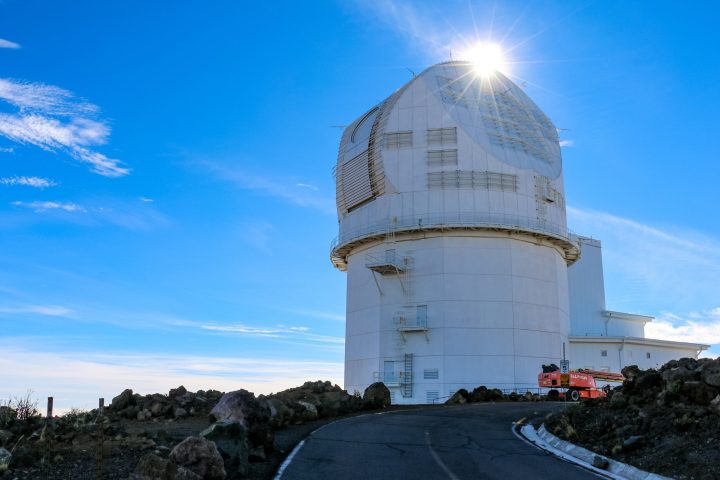Astronomers of the world will soon have an incredible new tool for observing the sun, in the form of the Daniel K. Inouye Solar Telescope in Hawai’i. The Inouye Solar Telescope recently began its first science observations at the start of its year-long commissioning phase.
The telescope from the National Science Foundation (NSF) is named after the senator from Hawai’i who passed away in 2012 and is the world’s most powerful solar telescope. With it, astronomers will be able to observe the sun in more detail than ever before. “We are proud to bring the world’s largest and most powerful solar telescope online,” said NSF Director Dr. Sethuraman Panchanathan in a statement. “The NSF’s Daniel K. Inouye Solar Telescope is a modern technological marvel, named in honor of late Senator Inouye, an American hero and leader dedicated to scientific research and discovery.”

The telescope released its first light image in 2020, showing a close-up view of the enormous cell-like structures on the surface of the sun. To celebrate the first science observations, the team has released another image taken using the telescope in May 2021, showing a rather horrifying close-up view of sunspots on the sun’s surface.

The construction of the telescope was controversial, as it is located on the Haleakalā volcano on the island of Maui, which is a site of spiritual significance to native Hawaiians. There were protests against its construction, along with the nearby Thirty Meter Telescope (TMT), but work on the Inouye Solar Telescope began in 2013.
The beginning of science operations had been delayed by 18 months due to covid, but now the telescope can begin taking high-resolution images of the sun and collecting data on phenomena like solar flares, sunspots, and coronal mass ejections.
“Taking the first science observations with the Inouye Solar Telescope marks an exciting moment for the solar science community,” said Dr. Thomas Rimmele, NSO Associate Director and lead of the Inouye Solar Telescope, “There is no other facility like the Inouye Solar Telescope. It is now the cornerstone of our mission to advance our knowledge of the Sun by providing forefront observational opportunities to the research community. It is a game-changer.”
Editors' Recommendations
- Asimov’s vision of harvesting solar power from space could become a reality
- Sun emits most powerful solar flare observed in six years
- World’s most powerful rocket clears safety review for next test launch
- Scientists ‘hack’ Solar Orbiter’s camera to get a better look at the sun
- Watch SpaceX test fire the world’s most powerful rocket




